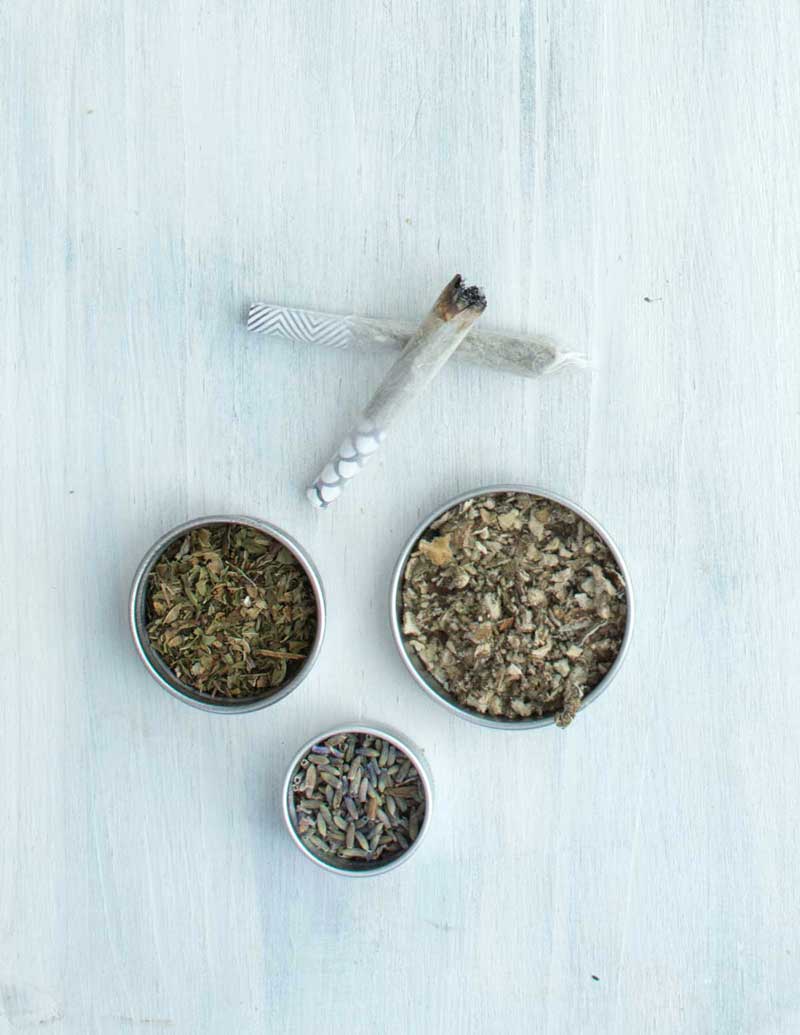Herbal smoking blends are typically made of three parts.
There are many herbs that can be used for these three categories, but we have listed where our collection of 8 herbs falls below.
Learn More-
Base: light and fluffy herbs
-
mullein, cannabis
-
Supportive: specific to the purpose for making the blend
-
thyme, rose, rosemary
-
Flavor: adds flavor to the blend
-
lavender, peppermint, chamomile
The ratios of each herb you use is up to you, but below are guidelines to get you started. Don't be afraid to experiment in smaller quantities (like tsp instead of tbsp) to find ratios that work best for you!
-
Base: 2 tbsp.
-
Supportive: 1 tbsp.
-
Flavor: 1/2 tbsp.
Remember!
The quality of your herbs is important, especially if you’re smoking them! Check out our article on Healing Herbs to learn how to find quality herbs. This article also lists the therapeutic benefits of each of the 8 herbs listed above.
Vaporizing your Herbal Blend
As we all know, smoking anything — whether it be tobacco, cigarettes, cannabis, or herbs — can be damaging to our lungs. When plant material is ignited or lit, a combustion takes place that produces tar and other toxic chemicals that can cause harm to our bodies. Vaporizing, on the other hand, warms plant material enough to release its beneficial compounds without creating a harmful combustion.
When it comes to smoking cannabis, a study showed that 88% of the smoke has non-beneficial cannabinoids and terpenes — meaning only 12% of what was inhaled had helpful compounds.* When the cannabis was vaporized instead, 95% of vapor produced had beneficial compounds. While there aren't specific studies done on vaporizing vs smoking other herbs, we can only assume that the concept carries over.
*Please note that while smoking cannabis is less beneficial than vaporizing it, smoking cannabis is less harmful than smoking tobacco (NCBI). Click here to learn more about the differences in smoking vs vaporizing.
Vaporizing Temperatures
The thing about vaporizing is that every herb combusts at a different temperature, so it can be tricky to figure out what temperature to vaporize your blend at. Below is a list the combustion temperature of each herb so that you can experiment with vaporization temperatures and find what feels best for you.
| Cannabis | 347-455°F | 175-235°C |
| Chamomile | 374-400°F | 190-204°C |
| Lavender | 266-390°F | 130-198°C |
| Mullein | 302-450°F | 150-232°C |
| Peppermint | 331-450°F | 166-232°C |
| Rose | 212-450°F | 100-232°C |
| Rosemary | 257-350°F | 125-176°C |
| Thyme | 374-410°F | 190-210°C |
Tried & True Blends
Below are a couple of our favorite smoking blends, but these are also great blends to make into tea or throw into a bath. Click here to learn how to make your own tea or bath bag out of a coffee filter.
Strengthening & CalmingGreat for winding down after work!
|
Stimulating & SoothingGreat for taking a mental break!
|

This post was inspired by The Herbal Academy's Post about "How to Craft Your Own Smoking Blends" by Agatha Noveille





















